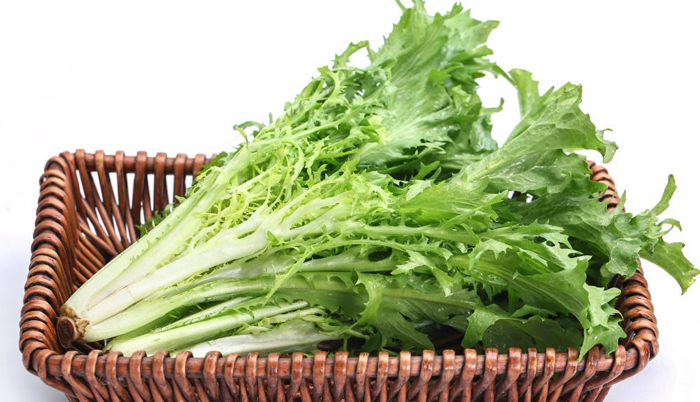![]() Home > Lifestyle
Home > Lifestyle
Chicoric Acid, A Polyphenol Found In Many Vegetables, Is Packed With Many Health Benefits

![]() May 23rd, 2019 | 10:03 AM |
May 23rd, 2019 | 10:03 AM | ![]() 1036 views
1036 views
NaturalNews.Com
Many plants that are used as food are rich in substances called phytonutrients, which are beneficial to human health. These phytonutrients possess biological properties that can potentially treat or prevent diseases. One example of a food-sourced phytonutrient is chicoric acid, also spelled cichoric acid, a polyphenol found in abundance in the leaves of the herbaceous plant chicory. Chicoric acid has been extensively used as a nutraceutical food ingredient due to its powerful antioxidant, anti-HIV, and anti-diabetic activities.
In a recent study, researchers from Northwest A&F University in China compared the protective effects of chicoric acid (CA) and its metabolites, caffeic acid (CFA) and caftaric acid (CTA), on biomolecules against oxidative damage and inflammatory responses. Their results, which demonstrated the activity and potential of CA and its metabolites as natural antioxidants, were published in the journal Food Science and Human Wellness.
Chicoric acid as antiviral agent and immune enhancer
CA is a natural phenolic acid that can be found in significant quantities in various plants, such as basil, echinacea, horsetail, pear leaves, and lemon balm. CA was largely ignored by the scientific community until the health benefits of taking food and supplements containing CA was reported. One such benefit of CA is its ability to improve immune response in humans. CA promotes phagocytosis, a process that involves the engulfment of bacteria and other foreign bodies by immune cells called phagocytes. CA also stimulates wound healing and T-cell activation, and increases the production of other chemicals important for the immune system.
Aside from this, CA is also known for its antiviral activity, especially against the virus that causes AIDS. Researchers began studying CA for its antiviral potential when they discovered that it was one of a few biologically active chemicals that can inhibit the enzyme integrase. In the pathogenesis of HIV, integrase is responsible for injecting the viral genome into the DNA of the host cell. Researchers believe that stopping the activity of integrase is crucial in the prevention of HIV infection. Studies about HIV are now focused on the development of HIV medications called integrase inhibitors and chicoric acid, together with chlorogenic acid and caffeic acid, which are candidate inhibitors.
Chicoric acid exhibits antioxidant and anti-inflammatory activities
For their study, the Chinese researchers reproduced oxidative damage by free radicals in vitro and microglial inflammation by lipopolysaccharide in BV2 cells to determine the protective effects of CA and its metabolites on cell macromolecules. CA can be partly metabolized into CFA and CTA on cytochrome P450s in rat liver microsomes. Upon testing these compounds, they found that all three significantly inhibited protein degradation and carbonylation induced by hydroxyl radicals and alcoxyl radicals. They also suppressed hemin/nitrite/H2O2 triggered-nitration, a process that results in oxidative injury and occurs under certain pathological conditions, such as the pathogenesis of neurogenerative diseases in the brain.
In addition, CA, CTA, and CFA all inhibited linoleic acid and soybean lecithin liposomes peroxidation in a dose-dependent manner, exhibiting potent antioxidant activity. They also stopped the oxidation of herring sperm DNA, as well as the breakage of pBR322 plasmid DNA. Moreover, CA and its metabolites suppressed lipopolysaccharide-induced decline of BV2 cell viability and the production of nitric oxide (NO) and reactive oxygen species (ROS). In all of these, CA demonstrated stronger bioactivities than CTA and CFA within a certain concentration range.
NO and ROS are markers of oxidative stress. ROS, in particular, is involved in the progression of inflammatory disorders. The ability of CA, CTA, and CFA to inhibit the production of ROS and NO and protect cells from oxidative stress proves their potential not only as antioxidants, but also as major contributors in the treatment and prevention of diseases caused by chronic inflammation. The researchers also concluded that CA and its metabolites should be used as food components for nutrition.
Source:
courtesy of NATURALNEWS
by Evangelyn Rodriguez
If you have any stories or news that you would like to share with the global online community, please feel free to share it with us by contacting us directly at [email protected]